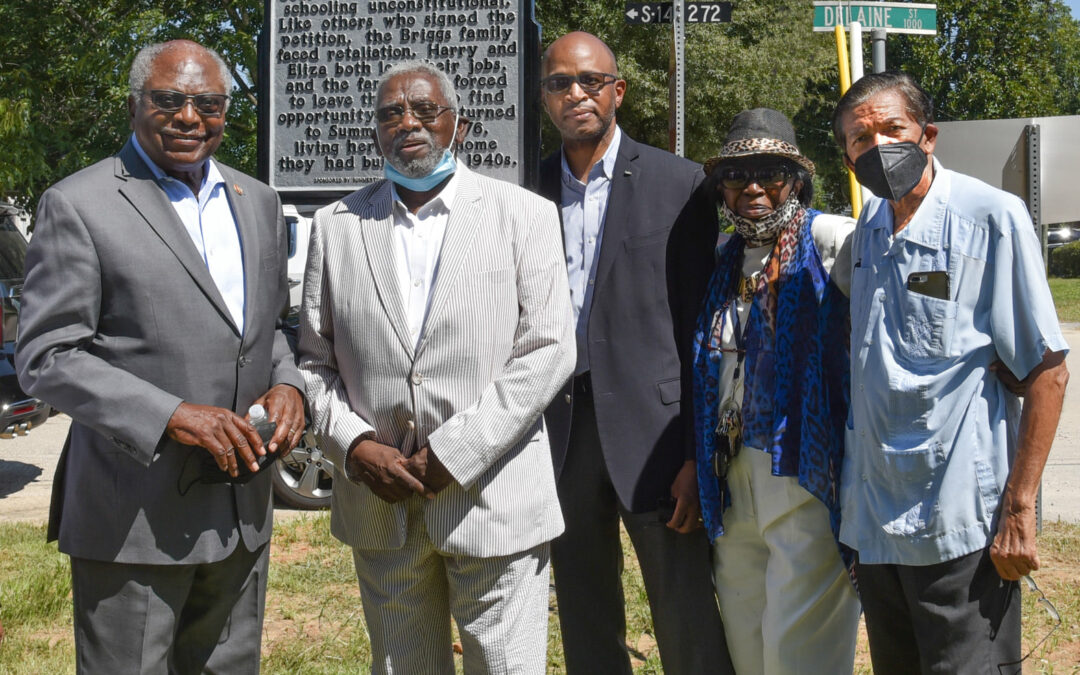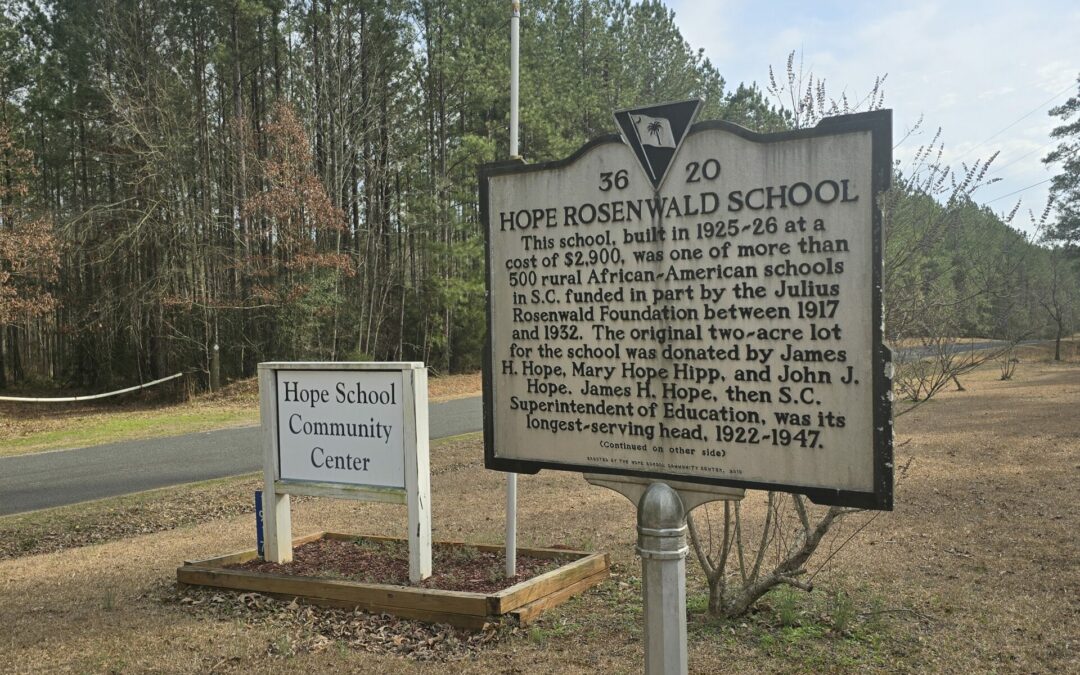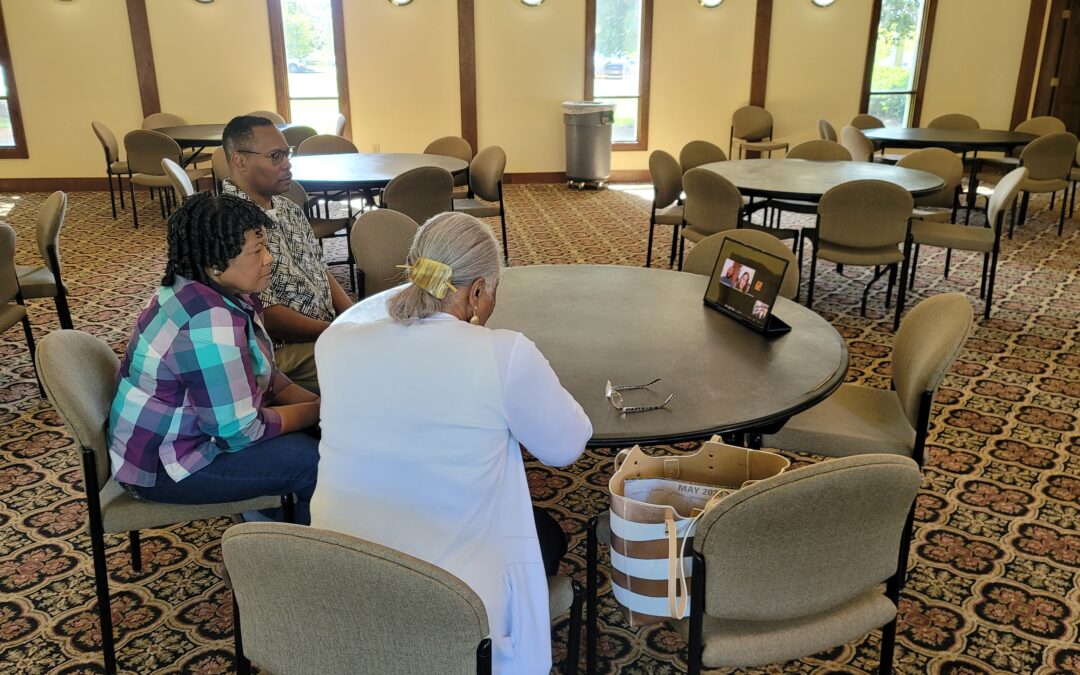
Defying Walmart Boosts African American History and Preservation: Jannie Harriot’s Story
By: Marc Rapport, WeGOJA Board
April 15, 2024
Plans for a new Walmart unexpectedly helped spur a second career for Jannie Harriot as a passionate advocate for African American historic preservation in South Carolina.
The Hartsville native had just returned to her hometown in 1990 after nearly 20 years of teaching and community agency work in New Jersey when the local school board announced it would be selling a former high school to the retail giant for the site of a new store.
Since 1921 that site had been home to multiple schools for the town’s Black community until it ultimately closed in 1982. Ms. Harriot was a graduate of one of those schools – Butler High School – and helped lead a community effort to save the old site.
They did indeed save it, and Ms. Harriot went on to play a pivotal role in African American historic preservation across South Carolina, culminating with her appointment as a charter member of the South Carolina African American Heritage Commission (SCAAHC) and the creation of its foundation, now known as WeGOJA.
From College to Teaching, Education Work, and Now Historic Preservation Work
Ms. Harriot attended Talladega College in Alabama, Fayetteville State University in North Carolina, the University of South Carolina in Columbia, and Montclair State College in New Jersey.
She taught in public schools in both Carolinas and at community colleges in New York and New Jersey. She also has served as executive director for several non-profit organizations and executive director of the Allendale County First Steps to School Readiness.
At home in Hartsville, she was the founding chairperson of the Butler Heritage Foundation when they successfully petitioned the Darlington County Board of Education to deed the Butler High School in Hartsville to the foundation for preservation.
During her tenure as chair, the SCAAHC has published African American historic places guides and teaching materials. She is currently the executive director for programs and development at the Cecil Williams South Carolina Civil Rights Museum.
Here, Ms. Harriot shares more of her journey
Tell us more about the Butler work that got you started on this journey.
Jannie Harriot: Well, ironically, I knew nothing about historic preservation when I returned to South Carolina and Hartsville after 18 years in New Jersey. I had no plans and didn’t know what I was going to do next. Then one of my former teachers came to my house and told me that the school district is about to sell Butler for a Walmart and that I needed to go on a local radio station community talk show the next morning and tell everyone why they shouldn’t do that.
So, the next morning I got up and did the show and talked about why I thought my high school building was so important and why it should remain a part of the community. There was another person who taught at Butler who wanted to get involved, too.
We knew nothing about the process, really, but we decided to form a non-profit organization and worked to get members of all the graduating classes from Butler involved. For the next year, I spent my time talking to local officials and other community members convincing them that Butler should not be a Walmart.
That was in 1990 and 1991. So today, the Butler Heritage Foundation owns the property. We have a Boys & Girls Club there now, and a senior citizens club, and an historic building that has its own state marker.
That effort also led to a meeting in 1992 with the state Department of Archives and History and to a conference about the lack of historic preservation for African Americans in South Carolina. Thus was created first the South Carolina African American Heritage Council and several years later the African American Heritage Commission.
What about the Walmart?
Jannie Harriot: Oh, they got their Walmart. On another site about three blocks down the street.
Around South Carolina in general, what did the field of African American preservation look like at that time?
Jannie Harriot: Basically, nothing was being done at that time. That’s the first thing I learned when I, this business teacher from New Jersey who knew nothing about historic preservation, found myself on this commission with all these historians and professors.
But we all knew that African American history was very important and that it was being neglected in South Carolina, both in the schools and in preserving important sites. That’s not to say people hadn’t been trying. Dr. Barbara Jenkins down in Orangeburg was one of those people trying to do things, but basically there was no support from the state or from most communities.
What keeps you committed to this work? What drives your personal passion for it?
Jannie Harriot: Well, I’m a child of the 60s. I took part in the marches. I’m also a person who believes that our children deserve the best of the best. I have none of my own, but my nieces and nephews tell me there’s something like 170 of us in four generations of our family.
I want a better world for all of them. I want all African Americans to be, as Dr. Martin Luther King said, recognized for who they are, not for what color they are. And I think that when we tell our true stories, when we preserve our important historic sites, that helps create an opportunity for that vision to become a reality.
What do you see has the most gratifying outcome of your work so far?
Jannie Harriot: When the SCAAHC was created in 1993, there were only 36 sites in South Carolina listed on the National Register of Historic Places or displaying a state historical marker. Today there are more than 300.
Mind you, the historical marker program itself was started in 1936. It’s not because the SCAAHC created all those new sites in the past 30 years that we’re up to more than 300. But we surely played our part by encouraging and helping people in their home communities to recognize their own history and to uplift it by applying for state historical markers and for listing on the National Register.
After almost 20 years of having chaired the SCAAHC, the recognition of these sites that so significantly shaped our history and our culture is both validating and gratifying.
Along with the physical proof – the listings and markers – what other progress and changes have you witnessed in the African American historic preservation movement?
Jannie Harriot: More acceptance of the culture and of the contributions of African Americans in our state and in our country.
If people don’t really know about it, they can’t appreciate it. So, what I think is that the more we talk about those accomplishments, the more we talk about those contributions, the more other people will recognize what was done by the people of this state – by the Black people of this state – to create the South Carolina we see today.
What do you see as the biggest barriers to preserving African American history and historic spaces now?
Jannie Harriot: Do you need to ask? I mean, can you imagine what’s going on? Can we talk about what’s going on in our General Assembly and in other state legislatures across the country? Being told that our history should not be taught in schools? Where do you teach them then? Where do kids learn about our contributions, our history? How are they going to know about it?
That simply is the biggest barrier. And if kids are not going to learn about African American history in the classroom, it’s up to us outside of the classroom to do what we can to make them aware of it.
How do you do that? What is your best advice or people who would like to get involved?
Jannie Harriot: You know, I was having a conversation with someone a few days ago, and we were talking about Briggs vs. Elliot and about the new laws that are preventing the teaching of Black history, and what we said was, “Hey, break the law.”
I think about those teachers in Elloree, South Carolina, who quit their jobs because the state law said you can’t belong to the NAACP and be a teacher here. Now this generation of folks have to say, the heck with that, we’re going to do what needs to be done, too.
So, I say, get involved. Talk to our legislators. Help them understand that this is crazy. That they’re trying to disenfranchise a whole group of people by negating their past just because you find some of that history uncomfortable.
Can you imagine how uncomfortable I feel many times when I’m sitting in a state meeting or organization or a commission, and I’m the only Black person there, and everybody’s talking about their history, and my history is not even being discussed?
These stories won’t tell themselves. That’s our responsibility, to those who came before us, to ourselves, and to those yet to come.
###



